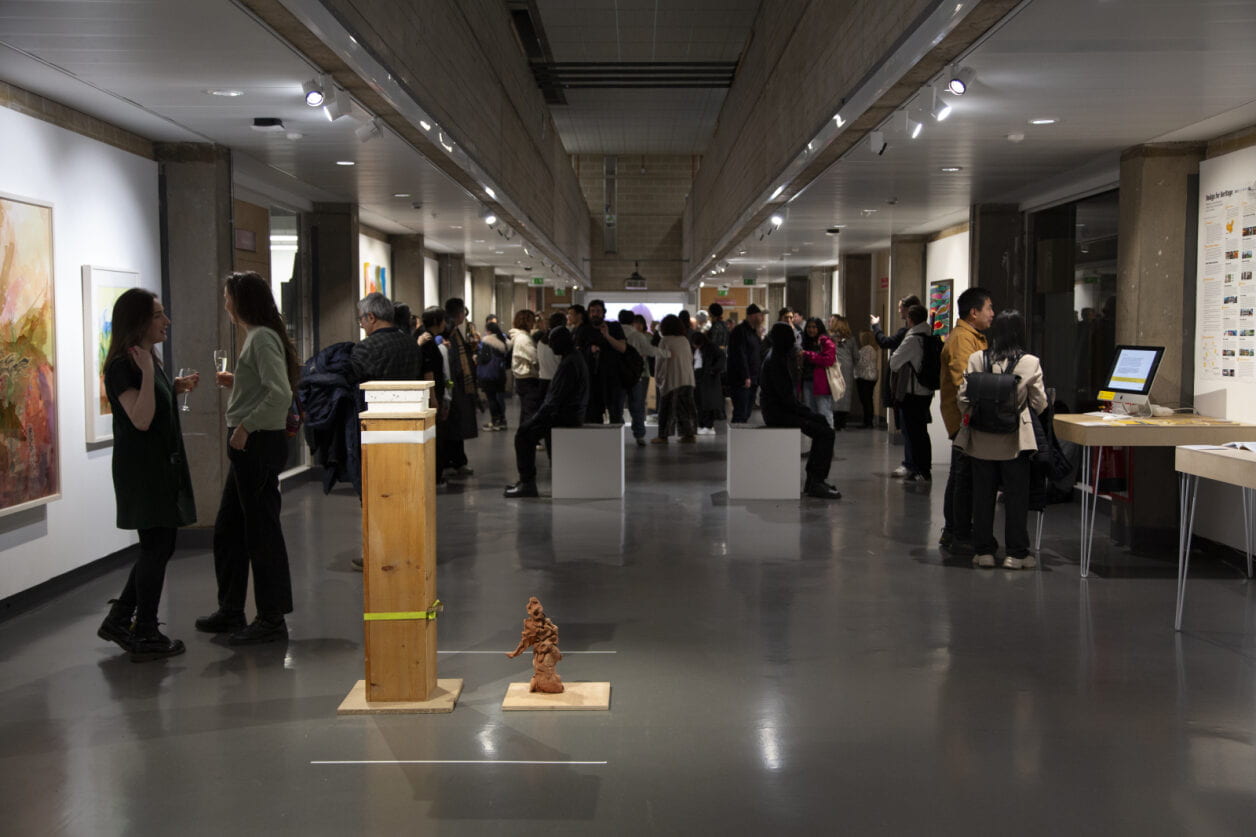This year’s Preview night of the DJCAD Research Expo included VR demonstrations, performances, and works of innumerable varieties demonstrating the breadth and depth of art thinking that drives creativity in the School of Art & Design. This post by Calum J Rennie attempts to bottle-up some of the events that transpired (and that you can no longer see) on the night.
Performance art is unlike anything else – is a completely false statement, this is made excruciatingly obvious when you, through gritted teeth, watch audience members interact with performers as if they were sculpture. This, to my mind, is the highest praise for a performance piece consisting of the two artists (Calum Eccleston and Alastair MacLennan) sitting for the duration of the exhibition stock still. I can’t help but imagine that hearing the shocked gasps responding to their sudden, synchronised movement swapping places on their opposed podium seats caused a small smile of satisfaction under the balaclava-stockings that they both had obscuring their features.
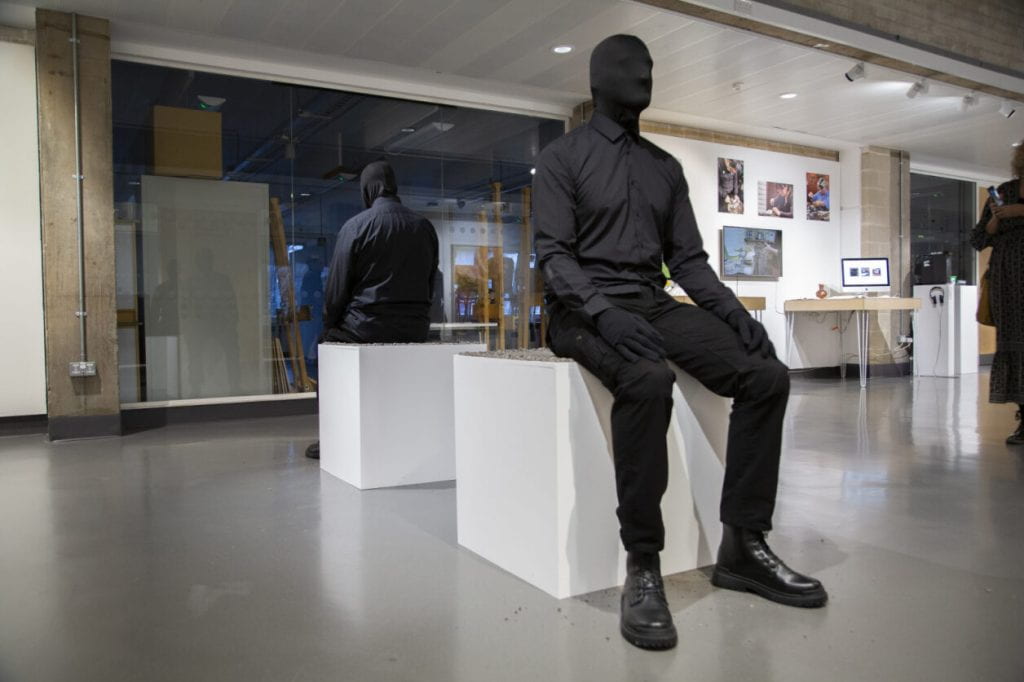
Not to get too “inside baseball”, but seeing the bookends of a performance piece like Eccleston’s Aspects of ‘was’ gives an insight into what distinguishes great performance. Watching the two collaborating artists enter the gallery space from behind the safety of the drinks table, during set-up, it was amazing to see how they meticulously spread gravel across the top of pristine, white, cubic plinths to form their seats. And disappearing into a side room to re-emerge still five full minutes before the gallery opened – the last artwork within the EXPO to be fully installed.
The ending was just as flashy, and not to get non-sequential but allow me this tangent. In the finale both artists stood, walked (or marched, fled, adjourned) to the room that I had witnessed them earlier emerge from, to rapturous applause from the audience. A couple minutes later, two artists emerged and went to mingle as if this was a normal thing to do, with a lively affect as if they had just completed a dash which had just got their blood pumping for another – it had never occurred to me that a performance like that could be exhilarating, for artist or viewer, but this piece proved otherwise.
Okay, now we head back into chronological order and into the body of DJCAD Research EXPO 2024 event programme proper, which started with Professor Maria Fusco, Chair of Interdisciplinary Writing, reading from her new book, a collection of essays titled, Who Doesn’t Envy With Us Is Against Us. The passage Maria selected to read was dedicated to the author’s mother Sally and told a story about her upbringing in a working-class family in Belfast that captivated the audience’s attention and in the way of good essay writing provoked laughs and contemplative silence in equal parts. I will resist recapping and in place spend my word count plugging her book – go buy it from Broken Sleep Books.
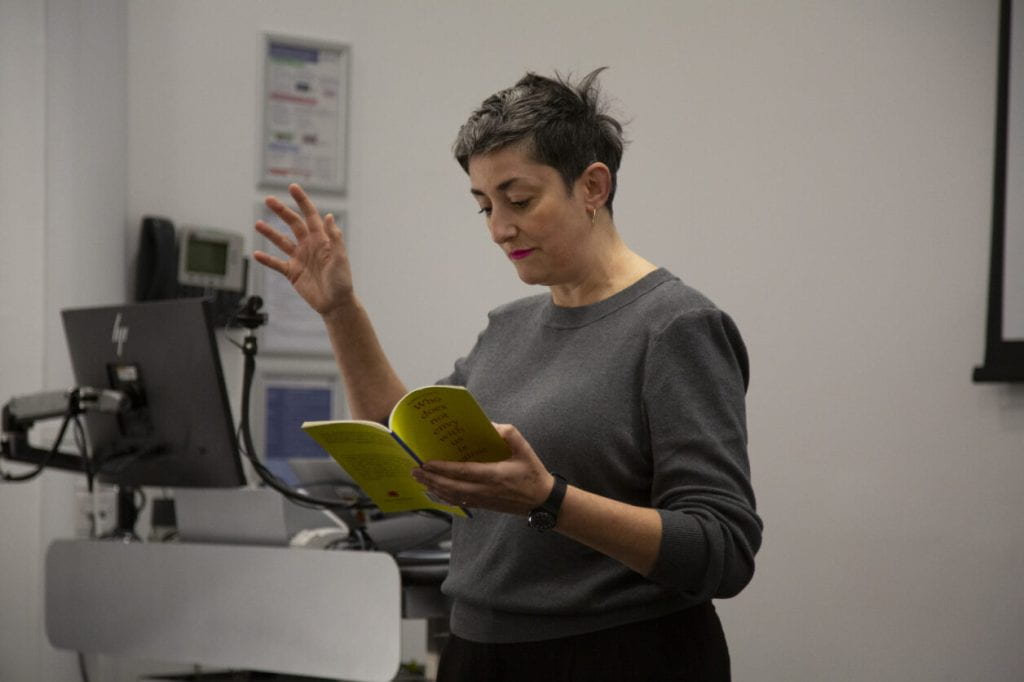
Following on from that, sharing a lecture theatre was the musical stylings of Dr Shaleph O’Neill on guitar, and electronic instruments creating an improvised visual music performance on guitar that had to be seen to be believed. This puts me in the horrific bind of having to describe both music, and the accompanying firework display of visualiser. In essence the world fell away, thanks to the darkened lecture hall, and the freed space was instead filled with sound and lights that spun and enthralled.
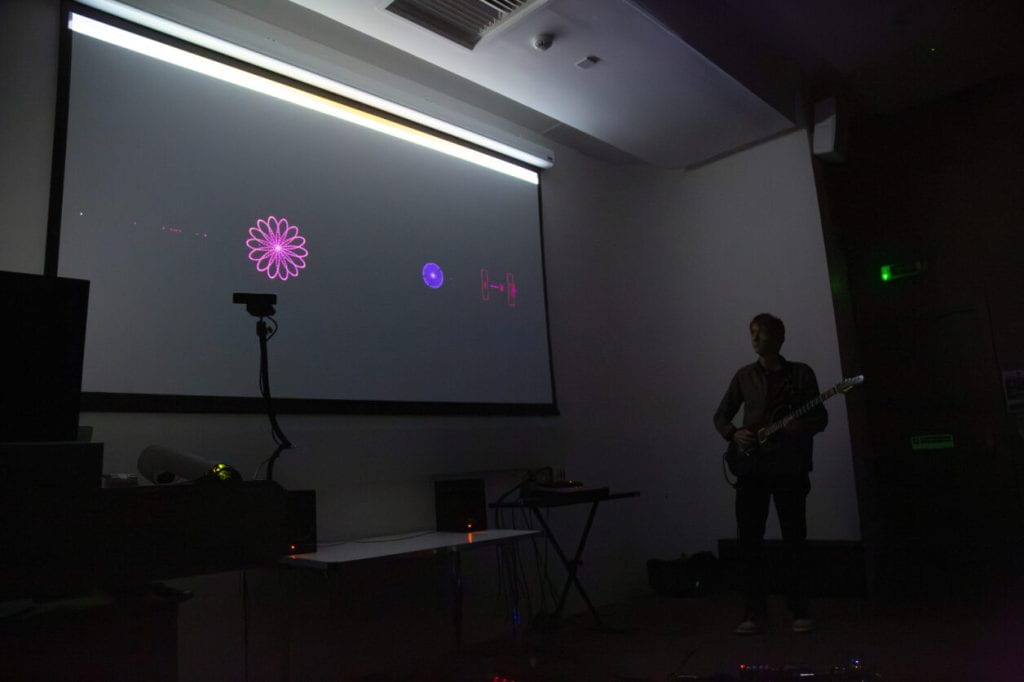
We burst out from the confines of the lecture hall into the EXPO floor proper – there is so much interesting work on show that I’m not going to try capture it here – go see it, open every day (except Sundays) 10-4 pm until 24th March!
Dr Sang-Hun Yu was kept busy henceforth, facilitating demonstrations of his VR system for Leveraging Virtual Reality for Enhanced Training in Crime Scene Reconstruction. Not having donned the helmet I cannot in good faith describe the experience, but those who did delve remerged gushing about how immensely cool their time spent had been – which is good for them, and good for the assembled audience giggling at the virtual explorer’s inexpert stumbling. There were whispers (started by me) of a plan to empty the gallery while someone was jacked-in (so to say) but this proved too difficult a task of group management to achieve.
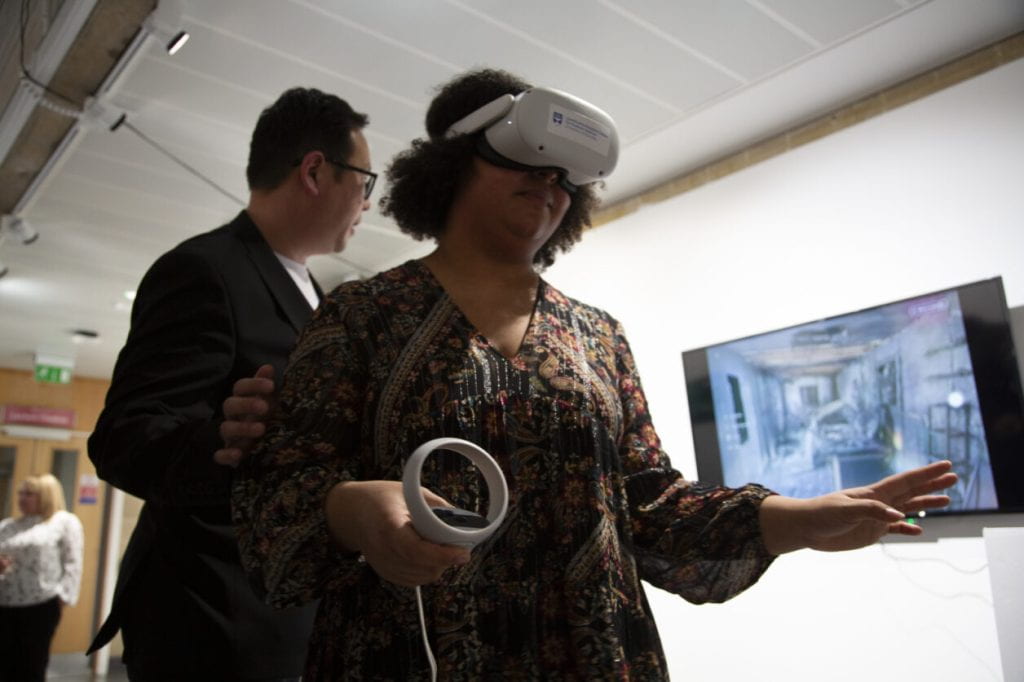
Lastly, hidden away in Professor Calum Colvin’s office was Synth Ecologies: Between The Sounds, a surround sound work by Shannon Maitland and Genevieve Sawyer Males – for one night only due to the office needed be returned to its main occupant. This left the work as another world you could escape into, overlapping and interacting with the everyday happenings of university work.
And thus concluded a jam-packed night, drinks were had, and conversations ranged topics spanning the collective interests put on display. The DJCAD Research Expo 2024 is open until the 24th of March and there are over 60 works across Gallery South and North that I couldn’t discuss in this piece but that you simply must see.
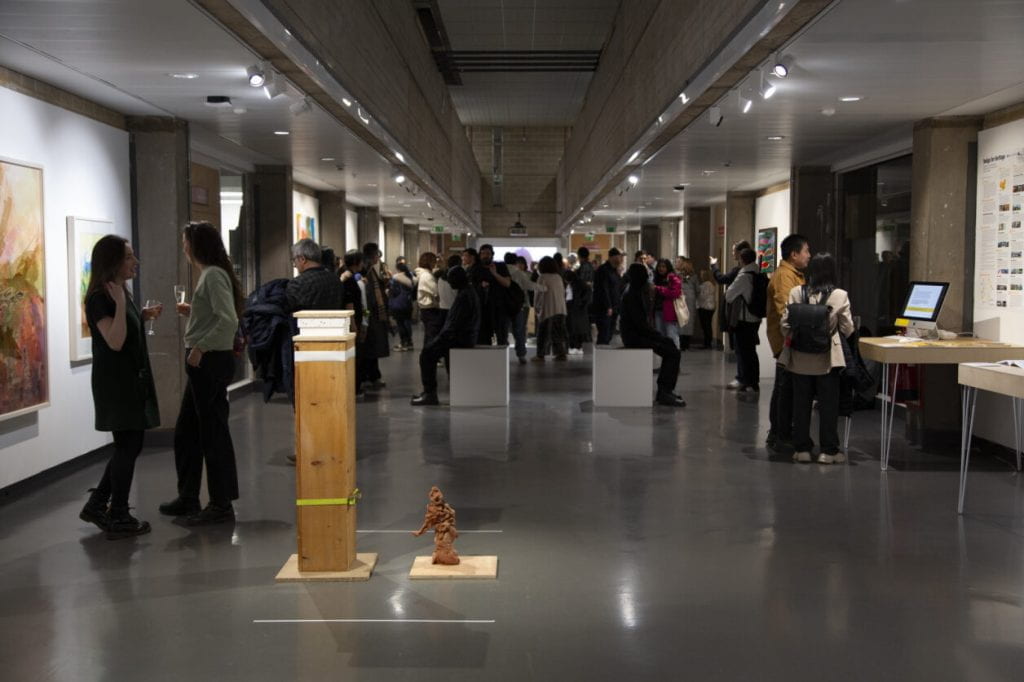
DJCAD Research EXPO 2024 and associated Event Programme is curated by Dr Judit Bodor (Baxter Fellow and Programme Director: MFA Curatorial Practice (Art & Design) and Dr Jacqueline Donachie (Baxter Fellow in Creative Economies).
Calum Rennie is current studying on the MFA Curatorial Practice (Art & Design) Programme.
Picture credits Sarah Smart.
